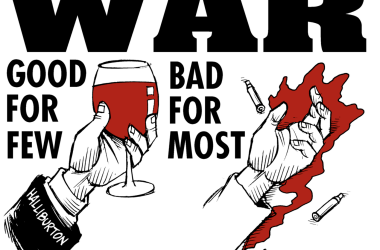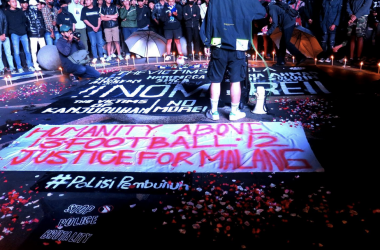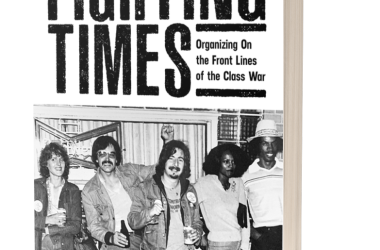By Gabriel Kuhn
A review of Immanuel Ness’s Southern Insurgency: The Coming of the Global Working Class (London, Pluto Press, 2016). Also published on AAP.
Immanuel Ness’s Southern Insurgency: The Coming of the Global Working Class joins publications of recent years that turn our attention back to the global injustices of capitalism, thereby reviving the importance of anti-imperialism in the anti-capitalist struggle. This is not only expressed in English publications such as Zak Cope’s Divided World Divided Class: Global Political Economy and the Stratification of Labour Under Capitalism, the 2015 Monthly Review special issue on “The New Imperialism”, or John Smith’s Imperialism in the Twenty-First Century: Globalization, Super-Exploitation, and Capitalism’s Final Crisis (reviewed on this blog), but also in foreign-language releases such as Torkil Lauesen’s Det globale perspektiv or Stephan Lessenich’s Neben uns die Sintflut. Ness himself is, together with Zak Cope, editor of the Palgrave Encyclopedia of Imperialism and Anti-Imperialism, which I’m sure is great but prohibitively priced and hardly accessible to anyone without university affiliation. Thanks goes out to publishers like Pluto Press for releasing titles such as Southern Insurgency for a broader audience.
The volume opens with a useful summary of the developments of global capital in the era of neoliberalism: the shift of production from the Global North to the Global South, the related creation of a massive industrial working class in the Global South, and the increasing organization of workers’ resistance beyond the mediation of trade unions. Ness adds a chapter on migration whose control is a key factor in the logic of neoliberal capitalism. Numerous tables illustrate the data that Ness uses to emphasize his points. The following quote underlines the horrors of the system in question:
“Ideological apologists for globalization and the application of market-based strategies ignore the growing importance of imperial and state violence that is used to support the system of economic inequality and exploitation. The threat of military and economic violence through coercion or the withdrawal of financial capital is more prominent in the contemporary era of capitalist globalization than it was in the postwar era of independence in the Global South. Since the 1990s, states that failed to comply with the strict rules of the capitalist international financial system have been sanctioned and threatened with economic and military destabilization by the capitalist West. In addition, the imposition of neoliberal reforms includes imperialist funding of police and private militias to suppress workers and peasants who oppose the new system, which is dominated by multinational foreign investments that redound to the benefit of the Global North.” (p. 16)
This has serious and obvious implications for socialist politics:
“The central issue confronting the development of a socialist movement today is to recognize and surmount the inequities arising out of the hierarchical system of international value transfer that inflects the global capitalist order, which relies on superexploitation of the working class in the Global South.” (p. 184)
Ness seems convinced that the traditional representatives of working-class struggles, that is, trade unions, are ill-equipped to fight on the new labor terrain, both because labor has become extremely diversified (think of the precariat, which Ness, interestingly enough, only mentions in passing) and because most major unions have become corrupted and incorporated into the administration of capitalism by both liberal and corporatist nation states. Ness declares: “This book asserts that workers can no longer rely on bureaucratic union leaders to defend them. Authentic worker struggles proceed from industrial workers themselves…” (p. 189) He maintains that this is the case in the Global South where “workers have shaken off the shackles and restraints imposed by the labor movement”. (p. 3)
In stressing the importance of workers’ direct involvement in the resistance against the rule of capital, the IWW becomes Ness’s prime historical reference point: “Worker assemblies and newly formed independent workers’ organizations in the South are making demands reminiscent of those made by the mass industrial organizations advanced by rank-and-file workers who formed the Industrial Workers of the World (IWW) a century ago.” (p. 30)
Indeed, the syndicalist tradition, which always tried to “organize the unorganizable”, receives new relevance in light of the seismic shifts in global labor. This is explored further in a volume that Ness edited with PM Press in 2014, New Forms of Worker Organization: The Syndicalist and Autonomist Restoration of Class-Struggle Unionism.
In Southern Insurgency, Ness offers three case studies to show that current workers’ struggles rest on new strategies, most importantly “worker assemblies … independent unions … [and] pressuring traditional unions” (p. 55). He looks at auto production in India, shoe manufacturing in China, and mining in South Africa. The China chapter also includes a useful introduction to the country’s present-day state capitalist model.
Ness stresses repeatedly that “workers struggles are rampant throughout the South” (p. 6) and he seems confident that they will cause fundamental social and political change. He writes:
“…the absence of official state recognition ironically gives workers greater freedom to pursue their appeals for justice and improved conditions. Workers in the Global South are paving the way for a democratic, inclusive, and participatory unionism that challenges the system of capitalist domination far more successfully than existing unions in the West that are advanced by sanctimonious advocates of liberalism and corporate social responsibility. In the South, rank-and-file workers are challenging existing unions to demand more than a raise – in effect a restructuring of society for all workers.” (p. 24)
This is a promising scenario. But is it too optimistic? It seems important to engage with the following questions to assess the revolutionary potential of contemporary and future workers’ struggles and develop relevant strategies:
1. Ness himself concedes that “to build on these struggles workers will need a disciplined and strong class-based organization”. (p. 290) But what will this organization look like? Will it follow a particular model, for example the IWW’s? Will it be an entirely new formation? Or is Ness simply using a shorthand to describe the need for diverse workers’ organizations, constantly renewing themselves by autonomous workers’ actions?
2. Is there any guarantee that the “inchoate worker organizations” (p. 55) of the Gobal South won’t become institutionalized? There are good arguments to be made against this prospect – for example, that the labor aristocracy can’t be globalized – but they need to be spelled out and discussed. Otherwise, it is all too easy to – once again – fall victim to capitalism’s frightening capacity to adapt and co-opt.
3. Can international trade union organizations such as the International Trade Union Confederation (ITUC) or the World Federation of Trade Unions (WFTU) play any positive role in the necessary cross-border alliances of the new workers’ movement, or do they simply belong to the enemy’s tools? How about newer outfits such as IndustriAll and UNI?
4. How do we retrieve what once was a defining feature of the workers’ movement: its internationalism? The colonial and imperialist order, wage differentials, and protectionism all stand in its way and affect (in different forms) the workers’ movements of all nation states. Ness alludes to this, but leans toward the optimistic side once more: “Although the movement of workers across national boundaries might create divisions that undermine existing labor standards, it might also be a source of working-class and union revitalization, through active international solidarity.” (p. 22) This is a laudable sentiment, but will it hold true? And what can/must we do to make it come true?
5. Finally, for someone living in Sweden, home to one of the institutionally most successful workers’ movements in history, it is inevitable to return to the question that members of the Blekingegade Group (whose story has been documented in the PM Press/Kersplebedeb volume Turning Money into Rebellion) asked in a 1983 essay: “What can radicals in the imperialist countries do?” Organize in syndicalist unions? Actively support workers’ struggles in the Global South? Organize with migrant workers? Motivate members of the old working class to join the struggle or write them off as bribed minions of capital?
These are the questions we need to tackle as organizers and activists once we feel that books such as Southern Insurgency have provided us with the right analysis.
(January 2017)
More blogs from Gabriel | Back to Gabriel Kuhn’s Author Page





